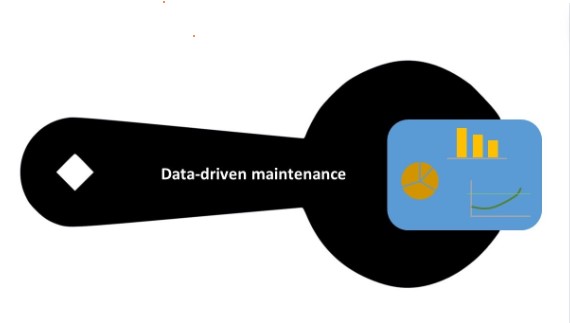
10 Data Driven Maintenance Metrics
Madhurima Sanyal |
13 Feb 2024 |
06:55 AM
- Understanding the Significance of Maintenance Metrics
- Why Maintenance Metrics Matter for Your Operations
- The Top 10 Essential Maintenance Metrics Explained
- Leveraging CMMS for Maintenance Metric Tracking
- Utilizing CMMS to Streamline Maintenance Metric Monitoring
- Implementing Maintenance Metrics: Best Practices
- Methods for Measuring Maintenance Metrics Accurately
- Empowering Your Maintenance Team with Data-Driven Insights
- Conclusion: Embracing a Data-Driven Approach to Maintenance Excellence
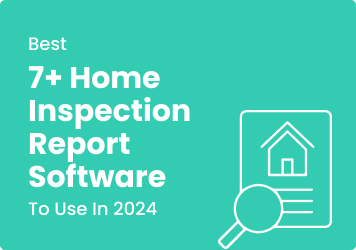
Best 7+ Home Inspection Report Software To Use in 2024
Madhurima Sanyal 24 May 2024 | 16:52 PMExplore the best home inspection report software of 2024. Discover features that make these top 7 tools indispensable for inspectors....
Maintenance in industrial settings is no longer just about fixing equipment when it breaks down. Today, it's about proactively managing assets to minimize downtime, reduce costs, and optimize performance. One crucial aspect of this modern approach to maintenance is the utilization of data-driven maintenance metrics.
Understanding the Significance of Maintenance Metrics

Maintenance metrics are quantitative measurements used to assess the performance and effectiveness of maintenance activities within an organization. These metrics provide valuable insights into various aspects of maintenance operations, including equipment reliability, workforce productivity, and resource utilization.
Why Maintenance Metrics Matter for Your Operations
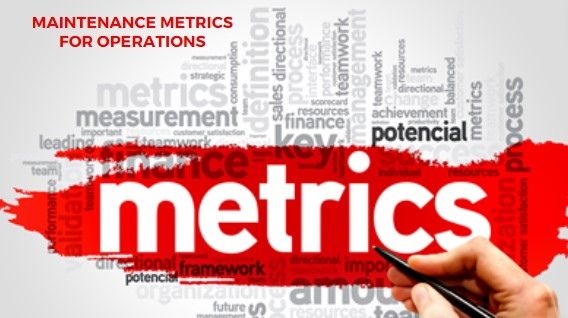
Maintenance metrics play a vital role in enabling organizations to make informed decisions regarding their maintenance strategies and resource allocation. By tracking key performance indicators (KPIs) such as preventive maintenance compliance, overall equipment effectiveness (OEE), and reactive maintenance rates, companies can identify areas for improvement, optimize maintenance processes, and ultimately enhance operational efficiency.
The Role of Data in Enhancing Maintenance Efficiency
Data lies at the heart of data-driven maintenance metrics. With the advent of advanced technologies such as sensors, IoT devices, and predictive analytics, organizations now have access to vast amounts of data related to their equipment and maintenance activities. By harnessing this data effectively, companies can gain valuable insights into equipment health, predict potential failures before they occur, and implement proactive maintenance strategies to prevent costly downtime.

In summary, maintenance metrics are essential tools for organizations seeking to optimize their maintenance strategy and maximize asset performance. By leveraging data-driven insights, companies can enhance maintenance efficiency, reduce costs, and maintain a competitive edge in today's fast-paced industrial landscape.
The Top 10 Essential Maintenance Metrics Explained
a. Mean Time Between Failure (MTBF)
Mean Time Between Failure (MTBF) is a crucial metric that measures the average time elapsed between equipment failures. It provides insights into the reliability of assets and helps organizations plan maintenance activities effectively. A high MTBF indicates greater equipment reliability, while a low MTBF suggests frequent breakdowns and potential inefficiencies in maintenance processes.
b. Mean Time to Repair (MTTR)
Mean Time to Repair (MTTR) measures the average duration it takes to restore equipment to working condition after a failure. This metric is essential for assessing maintenance responsiveness and efficiency. A shorter MTTR signifies quicker problem resolution and minimal downtime, contributing to enhanced operational productivity.
c. Inventory Turnover Metrics
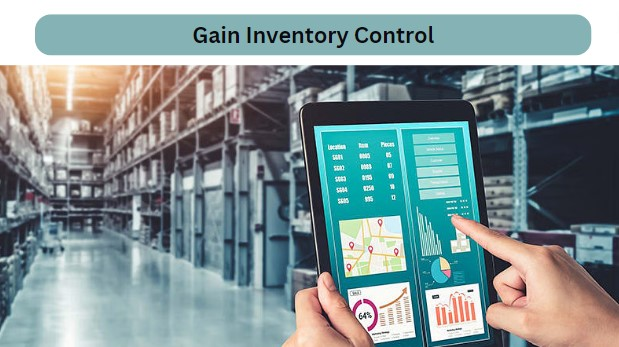
Inventory turnover metrics evaluate the rate at which maintenance supplies and spare parts are utilized within an organization. By tracking inventory turnover, companies can optimize stocking levels, minimize carrying costs, and ensure timely availability of critical components for maintenance activities.
d. Planned vs. Unplanned Maintenance Analysis
Planned vs. unplanned maintenance analysis compares the proportion of maintenance activities that are scheduled (planned) versus those that occur unexpectedly (unplanned). This analysis helps identify opportunities for increasing planned maintenance, which is generally more cost-effective and less disruptive than reactive maintenance.
e. Planned Maintenance Percentage Calculation
The planned maintenance percentage calculates the ratio of planned maintenance activities to total maintenance activities undertaken within a specific timeframe. A higher planned maintenance percentage indicates proactive maintenance planning and adherence to preventive maintenance schedules, leading to improved asset reliability and reduced downtime.
f. Achieving Preventive Maintenance (PM) Compliance

Preventive maintenance (PM) compliance measures the extent to which scheduled maintenance tasks are completed on time as per predetermined schedules. Achieving high PM compliance ensures that equipment is regularly serviced and maintained, reducing the likelihood of unexpected failures and prolonging asset lifespan.
g. Assessing Overall Equipment Effectiveness (OEE)
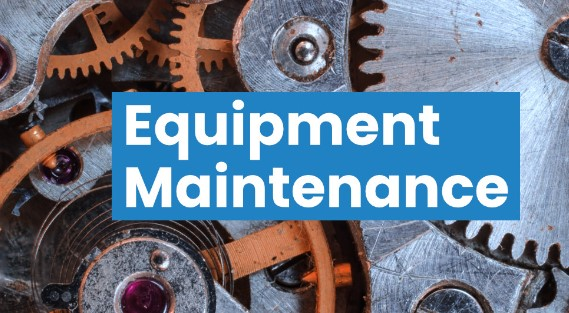
Overall Equipment Effectiveness (OEE) evaluates the performance, availability, and quality of equipment in manufacturing processes. By analyzing OEE, organizations can identify opportunities for improving equipment efficiency, minimizing waste, and maximizing production output.
h. Managing Maintenance Backlog Effectively
Maintenance backlog refers to pending maintenance tasks that have not been addressed due to resource constraints or other priorities. Effectively managing maintenance backlog involves prioritizing tasks, allocating resources efficiently, and implementing strategies to reduce backlog accumulation over time.
i. Investigating Root Cause for Maintenance Issues
Investigating the root cause of maintenance issues involves identifying underlying factors contributing to equipment failures or performance issues. By addressing root causes, organizations can implement corrective actions to prevent recurrence and improve overall reliability.
j. Evaluating Asset Performance Metrics

Asset performance metrics assess the performance and condition of individual assets within an organization. These metrics may include measures such as uptime, reliability, and energy consumption, providing valuable insights into asset health and maintenance requirements. Evaluating asset performance metrics allows organizations to optimize asset utilization, prioritize maintenance efforts, and maximize return on investment.
Leveraging CMMS for Maintenance Metric Tracking
In today's data-driven world, organizations rely on advanced tools and technologies to streamline their maintenance strategy and optimize performance. One such tool that has become indispensable for maintenance metric tracking is the Computerized Maintenance Management System (CMMS). Let's understand how CMMS enhances maintenance efficiency and facilitates streamlined monitoring of maintenance metrics.
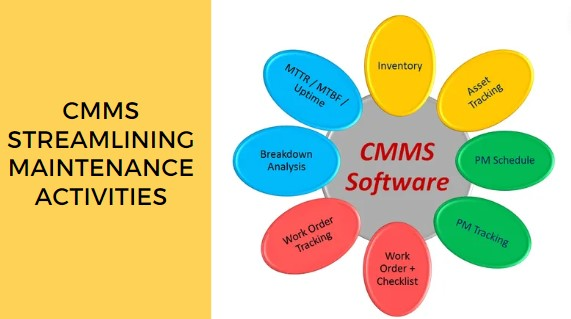
How a Computerized Maintenance Management System (CMMS) Enhances Maintenance Efficiency
A CMMS is a software solution designed to automate and centralize maintenance management tasks, ranging from work order generation to asset tracking and performance analysis. By leveraging a CMMS, organizations can achieve significant improvements in maintenance efficiency through several key features:
Centralized Data Repository: CMMS serves as a centralized database for storing all maintenance-related information, including asset records, work orders, maintenance schedules, and historical data. This centralized repository ensures easy access to critical information, eliminates data silos, and promotes data-driven decision-making.
Streamlined Workflows: CMMS streamlines maintenance workflows by automating routine tasks, such as work order generation, assignment, and tracking. Automated workflows minimize manual intervention, reduce administrative overhead, and ensure timely execution of maintenance tasks.
Proactive Maintenance Management: With CMMS, organizations can transition from reactive maintenance practices to proactive maintenance strategies. By implementing preventive maintenance schedules and condition-based maintenance triggers, CMMS helps prevent equipment failures, minimize downtime, and extend asset lifespan.
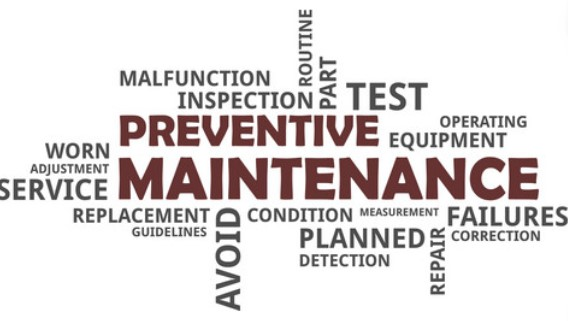
Real-Time Monitoring and Reporting: CMMS provides real-time visibility into maintenance performance through customizable dashboards and reports. Maintenance managers can track key metrics, monitor KPIs, and identify trends or patterns to make informed decisions about resource allocation and process optimization.
Utilizing CMMS to Streamline Maintenance Metric Monitoring
CMMS plays a crucial role in facilitating the monitoring and analysis of maintenance metrics by providing robust reporting and analytics capabilities. Here's how organizations can utilize CMMS to streamline key metric monitoring:
Customizable Dashboards: CMMS allows users to create customizable dashboards tailored to their specific maintenance metrics and KPIs. Maintenance managers can configure dashboards to display key metrics such as MTBF, MTTR, OEE, and planned maintenance percentage, enabling real-time monitoring of performance.
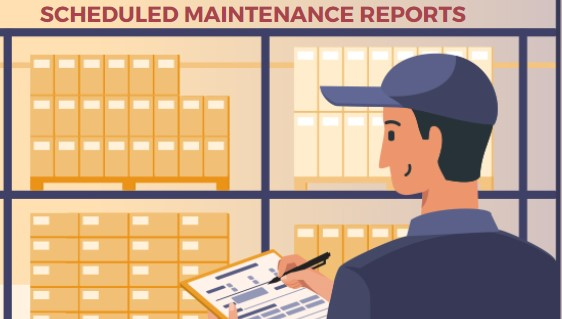
Scheduled Reports: CMMS enables automated generation and distribution of scheduled reports, ensuring that maintenance managers have access to up-to-date performance data without manual intervention. Scheduled reports can be customized to include relevant maintenance metrics and performance indicators, facilitating data-driven decision-making.
Alerts and Notifications: CMMS can be configured to send alerts and notifications based on predefined thresholds or conditions. Maintenance managers can set up alerts for critical maintenance metrics, such as equipment failures or excessive reactive maintenance work hours, allowing for timely intervention and corrective action.
Historical Analysis: CMMS maintains a comprehensive historical record of maintenance statistics, allowing organizations to conduct in-depth analysis of past performance trends. By leveraging historical data, maintenance managers can identify areas for improvement, benchmark performance against industry standards, and drive continuous improvement initiatives.

Leveraging a CMMS for maintenance metric tracking offers numerous benefits, including enhanced efficiency, proactive maintenance management, and streamlined monitoring of key performance indicators. By harnessing the power of CMMS, organizations can optimize their maintenance statistics, improve asset reliability, and achieve operational excellence.
Implementing Maintenance Metrics: Best Practices
Implementing maintenance metrics is essential for organizations looking to optimize their maintenance operations and achieve peak performance. By establishing clear objectives, measuring performance effectively, and leveraging data-driven insights, companies can drive continuous improvement and enhance overall efficiency.
Defining Maintenance Metrics and Their Applications
The first step in implementing maintenance metrics is defining the metrics themselves. Maintenance metrics should align with organizational goals and objectives, focusing on key areas such as equipment reliability, workforce productivity, and cost management. Common maintenance metrics include Mean Time Between Failure (MTBF), Mean Time to Repair (MTTR), overall equipment effectiveness (OEE), and reactive maintenance work hours. Once defined, these metrics can be used to track performance, identify trends, and drive improvement initiatives.
Methods for Measuring Maintenance Metrics Accurately
Accurate measurement is critical for meaningful analysis of maintenance metrics. Organizations can utilize various methods to measure maintenance metrics accurately, including manual data collection, sensor technology, and computerized maintenance management systems (CMMS). By leveraging advanced technology and automation, companies can streamline data collection processes, minimize errors, and ensure the reliability of performance data.
Tracking Progress: Establishing Key Performance Indicators (KPIs)
Establishing key performance indicators (KPIs) is essential for tracking progress and measuring the effectiveness of maintenance initiatives. KPIs should be specific, measurable, achievable, relevant, and time-bound (SMART), enabling organizations to set clear targets and benchmarks for performance improvement. Examples of maintenance KPIs include equipment uptime, maintenance backlog reduction, and adherence to preventive maintenance schedules.
Influencing Positive Outcomes: Strategies for Improving Maintenance Efficiency

To influence positive outcomes, organizations must implement strategies aimed at improving maintenance efficiency. This may involve investing in training and development programs for maintenance staff, optimizing maintenance workflows and processes, and adopting proactive maintenance strategies such as preventive maintenance and predictive maintenance. By fostering a culture of continuous improvement and innovation, companies can drive positive change and achieve sustainable results.
Assessing Success: Metrics for Evaluating Maintenance Performance

Evaluating maintenance performance involves analyzing key metrics and performance indicators to assess the effectiveness of maintenance tasks. In addition to traditional metrics such as MTBF and MTTR, organizations can also consider qualitative measures such as equipment reliability, customer satisfaction, and overall operational effectiveness. By taking a holistic approach to performance evaluation, companies can gain valuable insights into their maintenance practices and make informed decisions to drive continuous improvement and achieve long-term success.
Empowering Your Maintenance Team with Data-Driven Insights
Empowering your maintenance departments with data-driven insights is essential for driving continuous improvement and achieving maintenance excellence. By providing access to relevant data and analytics, organizations can enhance decision-making, optimize resource allocation maintenance costs reduction, and improve overall maintenance effectiveness. Let's explore some strategies for empowering your maintenance decision makers with data-driven insights:
Fostering a Culture of Accountability and Continuous Improvement
Fostering a culture of accountability and continuous improvement is crucial for leveraging data-driven insights effectively. Maintenance teams should be encouraged to take ownership of their performance metrics and strive for excellence in their work. By establishing clear expectations and fostering a culture of transparency and accountability, organizations can create an environment where team members are motivated to excel and continuously seek opportunities for improvement.
Providing Training and Resources for Effective Metric Utilization

Providing training and resources for effective metric utilization is essential for ensuring that maintenance team can leverage data-driven insights to their fullest potential. Training programs should focus on educating team members about the importance of maintenance metrics, how to interpret and analyze data effectively, and how to use insights to drive decision-making and problem-solving. Additionally, organizations should invest in providing access to advanced analytics tools and software platforms that enable maintenance teams to visualize data, track performance metrics, and identify trends and patterns.
Encouraging Collaboration and Knowledge Sharing Among Team Members
Encouraging collaboration and knowledge sharing among team members is critical for maximizing the impact of data-driven insights. By fostering an environment where team members are encouraged to share their experiences, best practices, and lessons learned, organizations can facilitate cross-functional collaboration and enable collective problem-solving. Additionally, establishing forums for regular communication and collaboration, such as team meetings, workshops, and online forums, can further enhance knowledge sharing and promote a culture of continuous learning and improvement.
Empowering your maintenance team with data-driven insights involves fostering a culture of accountability and continuous improvement, providing training and resources for effective metric utilization, and encouraging collaboration and knowledge sharing among team members. By implementing these strategies, organizations can leverage data-driven insights to optimize maintenance performance, achieve business objectives, and drive sustainable success.
Enhancing Maintenance Operations with Metric Optimization
Optimizing maintenance operations through metric optimization is essential for achieving peak performance and maximizing asset reliability. By analyzing key performance indicators (KPIs) such as equipment failure rates, maintenance effectiveness, and scheduled maintenance compliance, organizations can identify areas for improvement and implement targeted strategies to enhance operational efficiency. Through continuous monitoring and optimization of maintenance metrics, companies can minimize downtime, reduce maintenance costs, and ultimately achieve world-class maintenance standards.
Identifying Opportunities for Operational Enhancement through Metrics
Maintenance metrics provide valuable insights into the performance of maintenance operations and highlight areas where improvements can be made. By analyzing metrics such as maintenance effectiveness, emergency maintenance frequency, and corrective maintenance response times, organizations can identify opportunities for operational enhancement. Whether it's implementing preventive maintenance strategies, optimizing maintenance schedules, or investing in advanced technologies, leveraging maintenance metrics enables organizations to drive continuous improvement and achieve their business objectives.
Implementing Actionable Insights to Drive Process Improvements
Actionable insights derived from maintenance metrics are instrumental in driving process improvements and optimizing maintenance strategies. By analyzing trends, patterns, and correlations in maintenance data, organizations can identify root causes of equipment failures, prioritize maintenance tasks, and implement preventive measures to mitigate risks. From refining maintenance schedules to upgrading equipment and systems, implementing actionable insights enables organizations to optimize processes, enhance efficiency, and deliver world-class maintenance standards.
Realizing Cost Savings and Efficiency Gains Through Metric Optimization
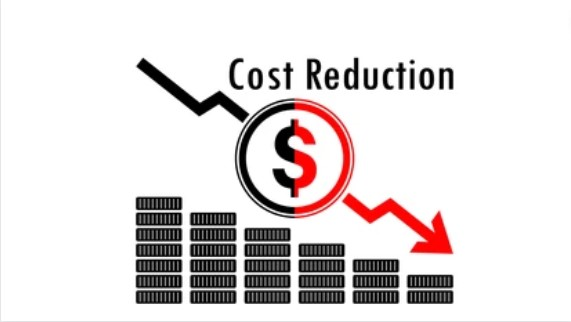
Metric optimization in maintenance operations not only improves reliability and performance but also leads to significant cost savings and efficiency gains. By reducing unplanned downtime, minimizing emergency maintenance interventions, and optimizing resource allocation, organizations can lower maintenance costs and maximize asset utilization. Additionally, by leveraging data-driven insights to streamline processes and eliminate inefficiencies, companies can achieve greater operational efficiency and realize tangible financial benefits. Through continuous monitoring and optimization of maintenance performance indicators, organizations can drive sustainable cost savings and efficiency gains, ultimately contributing to long-term business success.
Conclusion: Embracing a Data-Driven Approach to Maintenance Excellence
Leveraging data-driven maintenance metrics is paramount for achieving operational excellence and meeting business objectives. By implementing best practices in metric utilization, fostering a culture of continuous improvement, and empowering maintenance teams with actionable insights, organizations can optimize maintenance operations, minimize unexpected downtime, prevent equipment failure and drive cost savings. Through strategic analysis of maintenance data and proactive intervention, companies can enhance equipment reliability, streamline processes, and realize efficiency gains. Ultimately, by embracing a data-driven approach to maintenance, organizations can elevate their performance to world-class standards and position themselves for sustained success in today's competitive landscape.